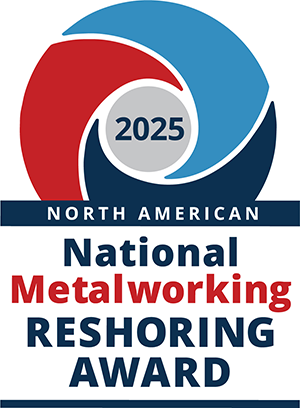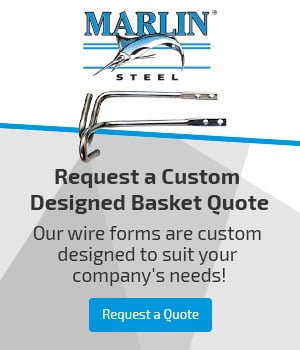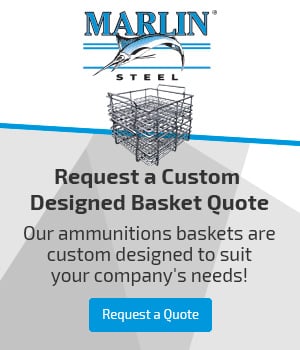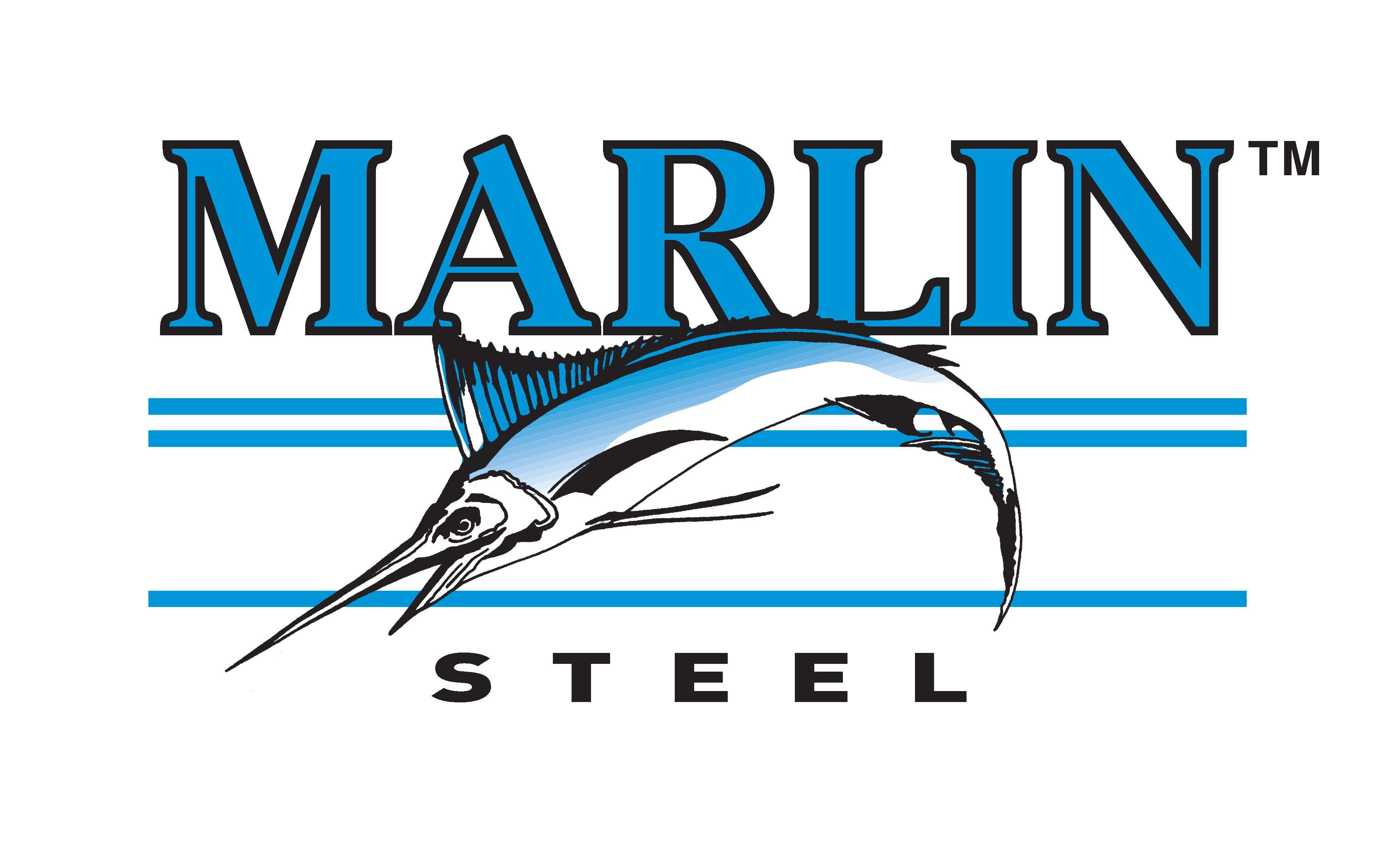Looking for ways to save money shouldn’t involve shortcuts. That usually just cuts the initial cost but ends up being far more expensive in the long run. Often, companies searching for custom wire basket solutions for highly specific solutions will seek out an overseas manufacturer.
The delay in the order may be manageable, and the initial savings impressive, but that's about it. More often than not, the basket only survives one or two runs through the process they were meant for before it is compromised through structural damage, rusted, or broken. Once damaged and deformed, the baskets go from protecting parts through a tough finishing cycle to ruining the very products they were meant to protect.
Why is it that these commodity wire products are getting damaged so easily? How can these baskets be improved to avoid such damage in the future?
Quick Links
- Why Your Wire Products are Getting Damaged
- How Coatings Can Protect Your Stainless Steel Baskets
- Why Use Halar for a Custom Coated Wire Baskets
- Case Study: Building Halar®-Coated Steel Baskets for a Lens Manufacturer
Why Your Wire Products are Getting Damaged?
The simple answer to that question is inferior design and product. However, understanding why they’re damaged is the key to understanding how to prevent that damage as well.
Reason #1: Parts Not Built to the Right Specification
Sometimes, a cheap wire product is so cost-effective because it was poorly made. That may be inferior raw materials, rushed processes, poor design, or other factors. For example, cutting corners on things such as structural supports may make for a reduced price, but it can leave the wire form too weak to take the load you’ll be using it for.
Imagine trying to load 25 lbs. of parts into a wire mesh basket with only a few thin wires for support, similar to the ones in a kitchen colander, but with the wires woven with twice as much open space. Such a basket might last for one or two loads, then be so bent out of shape as to be useless afterwards, with bulges in the form at each pressure point where the weight of held objects rested.
Cutting costs by removing thicker supporting wires might save a little money on the order, but without the support, the basket isn’t going to be up to carrying such a load. It’s important that a design does more than just barely meet the demands of your use for the wire form, but exceeds these minimum values so that the useful life of the wire product is maximized. Custom wire baskets made for your exact specs will save you money in the long run, and you're in this for the long game, right?
Reason #2: Poorly Formed Wire Products
Alternatively, parts might simply not have been formed correctly for your process.
For example, if your wire products were ordered from a manufacturer who relies on cheap manual labor to get the job done, those laborers work day in and out, shaping metal by hand. Using manual labor to bend steel to a precise and consistent angle is, however, an impossible task.
Have you ever bent steel by hand? It’s tough, physically demanding work, and it only gets harder as the day goes on and your back muscles get increasingly sore from doing the same heavy wire bends over and over. People get tired, arms get weak, and the temptation to get a little slack on consistency control becomes stronger as the day goes on. This doesn’t even take into account the danger of physical injuries that might limit work capacity (lost fingers and eyes, repetitive motion stress disorder, etc.).
The issue of poor construction for a wire form can be easily fixed using advanced factory automation tools. Unlike humans, robotic wire bending machines don’t get tired and stressed out after several hours of work. These machines are physically strong enough to bend wires quickly, and consistent enough to meet exacting tolerances whether they’re making one wire form or 10,000 wire forms.
Reason #3: The Wrong Material was Used for the Job
One of the most common causes of damage to a wire product we hear about from customers has to do with the quality of the material. Not all steel alloys are created equally. Some alloys are specifically optimized to handle certain kinds of stresses, making them better for applications that expose your wire product to those stresses.
For example, if your wire product is used in a process where it will be exposed to heavy corrosives, and it's made of plain steel, it will decay very quickly. Plain steel, while possessed of a high tensile strength, has poor chemical corrosion resistance.
When unprotected plain steel is exposed to heavy chemicals or immersed in fluid, the surface of the metal will react, causing pitting and corrosion. This can cause the metal to wear thin and lose its strength, increasing the likelihood of a break, or even warp the metal so that the wire form no longer fits your parts or parts washing machine properly. Deformed baskets pose a damage risk to your sensitive products and possibly even the equipment you use for your parts finishing processes.
The fix here is easy: wire product makers need to know what forces are involved in your process, including temperatures, chemicals, and other stresses so they can recommend the best materials for the job.
How Coatings Can Protect Your Stainless Steel Baskets
Sometimes, it’s okay to use a material for a wire product that isn’t up to withstanding the heat or chemicals it will be exposed to on its own… if said wire product is given a coating of a material that can take the chemical exposure and protect the wire from direct exposure. In many cases, using a material with a high tensile strength and hardness and coating it with another material can give you a wire form that has the best characteristics of both materials.
For example, you could add a PVC coating to a steel basket to make it better for ultrasonic parts washing processes. Here, your wire form benefits from increased chemical resistance and softness to avoid scratching parts from the PVC, as well as high tensile strength to withstand a heavy load and avoid deformation from the steel of the wire form.
When the base material of the wire form is not enough, it’s important to make sure there is a coating to supplement the base material so the wire form isn’t damaged by the process your company needs it for. However, specialized coatings are frequently skipped to cut costs, which, again, ends up costing you more in the long run.
Why Halar®?
For those unfamiliar with the name, Halar® is the brand name of an ethylene and chlorotrifluoroethylene (ECTFE) copolymer sold by Belgian chemical company Solvay Solexis. Halar® is often considered a competitor to Chemours’ ETFE Teflon®, and is often used in similar applications.
Key strengths of Halar® include:
- Strong chemical resistance
- Thick coating layer ranging between 5 and 60 mils (0.005” to 0.06”)
- Low porosity for superior protection in immersion applications
The major drawback to this polymer coating is its relatively low temperature resistance—Halar® will fail at temperatures in excess of 300 degrees Fahrenheit.
However, it’s not difficult to apply to a wire form. Halar is applied via a standard liquid spray equipment as it is composed of a high-adhesion primer and topcoat. This method of application ensures that different coating thickness may be applied depending on the basket and application’s needs.
Case Study: Building Halar®-Coated Steel Baskets for a Lens Manufacturer
No two manufacturers will have exactly the same manufacturing needs. There are countless variables in the manufacturing process, such as:
- Equipment
- Temperatures
- Duration
- Number of steps
- Chemicals used
- Environmental factors (humidity, salinity of the air, etc.)
Even two manufacturing plants producing similar products using similar processes might have slightly different needs based on location alone.
This is why it’s important to carefully consider all aspects of a manufacturing process when designing a custom parts cleaning basket. Simply copying an old design that worked for a different client without checking it against the new client’s process could result in disastrous consequences.
So, when Marlin was contacted to create custom steel wire baskets for a lens manufacturer, it wasn’t enough to just slap together an existing design—Marlin’s design team gathered comprehensive information about the client’s process, product, and manufacturing environment.
The end result was a custom Halar®-coated steel basket that would hold the client’s glass lenses safely through their coating process.
Designing the Basket
Once both the underlying material of the basket and its coating were finalized, Marlin’s degreed engineers set to the task of customizing the basket’s design. The design for this basket had to be especially well thought-out because of how delicate glass lenses are.
For example, if the glass lenses moved too much, they could chip, crack, or scratch during the coating application process. If there wasn’t sufficient drainage, chemicals would stick to the lenses and stain them.
To minimize production waste and reprocessing, the basket had to hold each lens securely, but still allow chemical runoff to drain freely. Here, using custom-shaped wires was a significant help.
The shaping of the wires would allow them to securely hold curved lenses, but the rounded, polymer-coated surfaces would prevent chemicals from settling on the basket. Large open space between individual wires helped improve air flow so that lenses would dry out quickly to minimize time spent on drying.
For this particular application and process, the client needed a material that would stand up to continuous, prolonged exposure to a variety of chemicals at room temperature. Because of the need to protect against a variety of chemicals and the lack of temperature extremes, Halar® was identified as the ideal coating material for this custom parts washing basket.
Additionally, the thicker polymer coating would provide some scratch protection for the lenses being processed by giving them a semisoft contact surface.
Once finished, the design was tested and re-optimized using physics simulation software. Only when the design was able to pass the test without failing did manufacturing begin. This practice saved considerable time, money, and effort on physical prototyping.
To get the best results and avoid damage to your wire products, it’s necessary to get a well-designed, optimized, and meticulously manufactured product from a reliable manufacturer with the tools and personnel to get the job done. If you're ready to talk to the Marlin team about how we can help you, get in touch today!



.gif)


